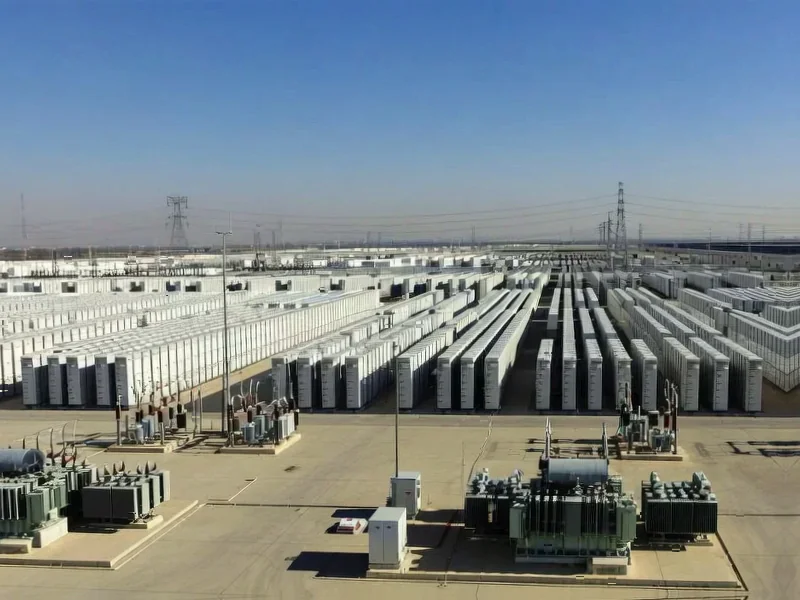According to Gizmodo, the AI and robotics industries are facing a massive scale problem that’s pushing them toward swarm-based solutions. Startup company Fortytwo just published benchmarks showing its approach of running small AI models on personal computers outperformed OpenAI’s GPT-5, Google’s Gemini 2.5 Pro, Anthropic’s Claude Opus 4.1, and DeepSeek’s R1 in reasoning tests. The company’s theory is that large AI models get stuck in reasoning loops while smaller models provide multiple answers that can be ranked for the best solution. Meanwhile, robotics researchers are developing colony-like communication systems where simple robots work together on tasks like wildfire monitoring or medical procedures. In one experiment, robots with only three basic abilities successfully navigated obstacles collectively that they couldn’t handle individually.
Why this changes everything
Here’s the thing about the current AI boom—we’re building these massive, energy-hungry data centers that cost billions, and for what? To create models that sometimes get stuck in reasoning death spirals when faced with complex problems. Fortytwo’s approach basically turns that whole concept on its head. Instead of one giant brain trying to solve everything, you have hundreds or thousands of smaller brains working together.
And the crypto-style reward system they’re using? That’s actually pretty clever. It creates an incentive for people to contribute their computing power and specialized models to the swarm. We’re talking about potentially tapping into the massive unused computing capacity sitting in people’s homes and offices worldwide. That’s a fundamentally different approach than building yet another data center in the desert.
When robots act like ants
The robotics side of this is even more fascinating. Researchers are basically proving that you don’t need incredibly complex individual robots to accomplish complex tasks. Think about it—if you have a swarm of drones monitoring wildfires, and one goes down, the others automatically adjust. No central command needed. They’re developing this collective intelligence where the whole becomes greater than the sum of its parts.
But here’s what really blew my mind: those microscopic robots clearing blockages in artificial blood vessels. We’re not talking about theoretical future tech—researchers actually did this with tiny magnetic robots forming chains to push through blockages. That’s the kind of medical breakthrough that could literally save lives without invasive surgery. And it all comes from simple machines working together.
Where this is all heading
So what does this mean for the future? I think we’re seeing the beginning of a major shift away from centralized AI toward more distributed, swarm-based approaches. The benchmarks Fortytwo is showing suggest that sometimes, many small brains really are better than one giant one.
And let’s be honest—this approach just feels more resilient. If one part of the swarm fails, the rest keep going. There’s no single point of failure. That’s crucial for applications where reliability matters, whether it’s medical procedures or disaster response.
Basically, we’re rediscovering what nature figured out millions of years ago. Ant colonies, bee hives, bird flocks—they all use swarm intelligence to accomplish things that individual members couldn’t. Now we’re applying that same principle to AI and robotics. The question isn’t whether swarm intelligence works—it’s why we didn’t try this approach sooner.




